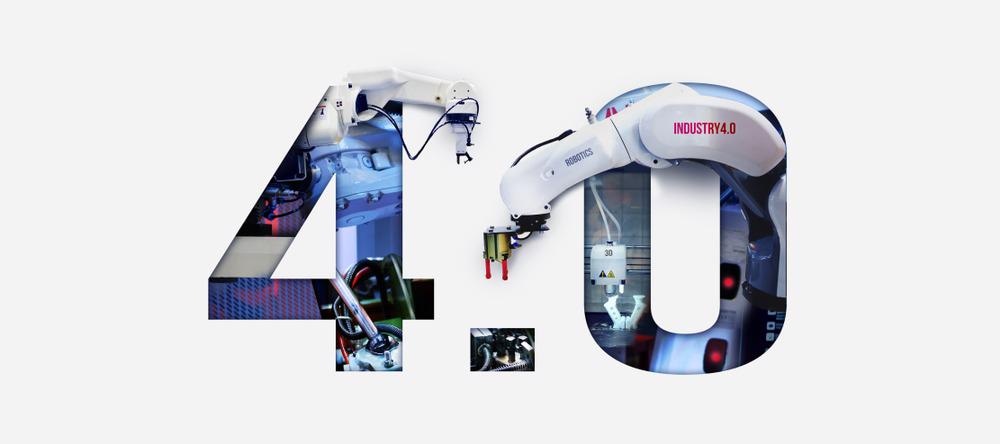In a recent study published in the journal Materials Today: Proceedings, researchers reviewed Industry 4.0 and the latest developments in smart materials, smart designs, and faster data transmission. Moreover, they discussed the hurdles, potential applications in any field, the intrinsic difference between technology and demand, and the loss of the labor force.

Study: The impact of smart materials, digital twins (DTs) and Internet of things (IoT) in an industry 4.0 integrated automation industry. Image Credit: buffaloboy/Shutterstock.com
What is Industry 4.0?
Industry 4.0 is a term coined in the year 2011 that refers to the fourth stage industrial revolution. The first industrial revolution was accompanied by the invention of the first generation of machines such as weaving machines, printing machines, steam engines, and many more.
Machines have started to ease the labor of humans. Industry 2.0 was catalyzed by the use of electricity. It allowed high mass production that catered to people across the globe for the first time. There was a huge gap between Industry 2.0 and 3.0. The third industrial revolution started with newly invented computers and information technologies (ITs). It made the world a global village. Producers were able to connect to consumers faster and over a very long distance.
Meanwhile, Industry 4.0 is more focused on automation that transcends from the physical dimension into the virtual dimension. Some of the distinct Industry 4.0 technologies are artificial intelligence, big data analysis, cloud computing, augmented reality, simulations/digital twins, autonomous robots, additive manufacturing, and cyber security.
The primary objectives of Industry 4.0 are increased productivity, consumer behavior analysis, sustainable methods with optimum profit, confidence building in exploring new possibilities, and agility and resilience towards unexpected events.
Components of Industry 4.0
Smart Materials
In the physical automation sector, it is the new smart materials that have paved the way, especially when it seems that the technology has reached its maximum limit. Smart materials are those materials that react to specific stimuli, external or internal.
Moreover, these stimuli can be programmed to achieve optimum performance over the desired period. The paint industry has found color-changing heat-sensitive thermochromic paints and pressure-sensitive paints. Shape memory alloys (SMAs) such as nitinol can regain their original shape after being subjected to an external stimulus like heat. This means that under a specific continuous stimulus, SMAs can retain their 100% dimension and performance over a long duration.
New carbon-based materials such as graphene, carbon fibers, and carbon nanotubes (CNTs) have revolutionized the semiconductor and electronic industries owing to their excellent mechanical, electronic, and thermal properties. Self-healing materials such as polymer and boron nitride (BN) composites are now being extensively used in aerospace applications.
Additionally, self-repairing polyurethane networks, hydrophobic surfaces, superabsorbent polymer, granular jammed materials, and climate-sensitive textiles are some of the notable examples of Industry 4.0 smart materials.
Simulations, Digital Twins (DT), and the Internet of Things (IoT)
A larger and costly mechanism or operation can be virtually simulated or physically simulated in miniaturized form to assess most of the product and process parameters and their effect on the system in advance. Even though simulation with the inclusion of all external factors is still complicated, it can significantly reduce the number of required prototypes.
Some software can analyze millions of working scenarios with different combinations of stimulating factors. Meanwhile, IoT enables connectivity among products, components, and industrial instruments to facilitate a flexible production line, reduce the load on instruments, and suddenly cater to a specific demand.
Challenges with Industry 4.0
In the last decade, the consumer society has not been able to absorb at the same rate that the new technologies and smart materials have developed. The consumer demography somewhat plays an important role in this. The young generation is quite adaptive, but they are not the major potential spenders. The older generation is skeptical about long-term reliability, privacy, deteriorating physical activities and social behavior, sustainability, and some ethical aspects such as reduction in the labor force and subsequent unemployment.
Conclusions
In summary, the researchers analyzed the concept, challenges, and future scope of Industry 4.0. Although it has increased the efficiency and effectiveness of physical and virtual automation, it has to address the growing concerns of the consumers and demands that have not paced with the new technologies and smart materials.
What looks feasible shortly is that, if the production sector moves in a direction of automation, the sustainability sector should induct more of the labor force to form a complete circular sustainable economy. Probably, the next-generation Industry 5.0 will be about a more robust sustainable circular economy that can boost the confidence of developers, producers, and consumers.
Disclaimer: The views expressed here are those of the author expressed in their private capacity and do not necessarily represent the views of AZoM.com Limited T/A AZoNetwork the owner and operator of this website. This disclaimer forms part of the Terms and conditions of use of this website.
Source:
Qazi, A., Mahmood, S., Haleem, A., Bahl, S., Javaid, M., Gopal, K., The impact of smart materials, digital twins (DTs) and Internet of things (IoT) in an industry 4.0 integrated automation industry, Materials Today: Proceedings, 2022, ISSN 2214-7853, https://www.sciencedirect.com/science/article/pii/S221478532200462X